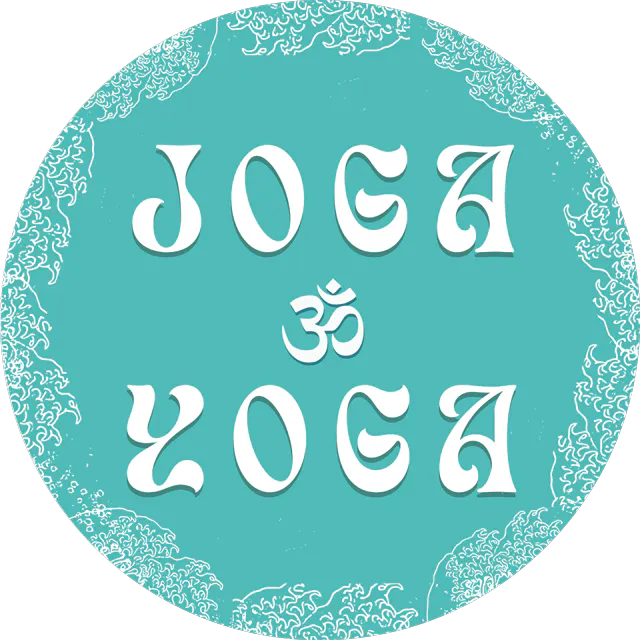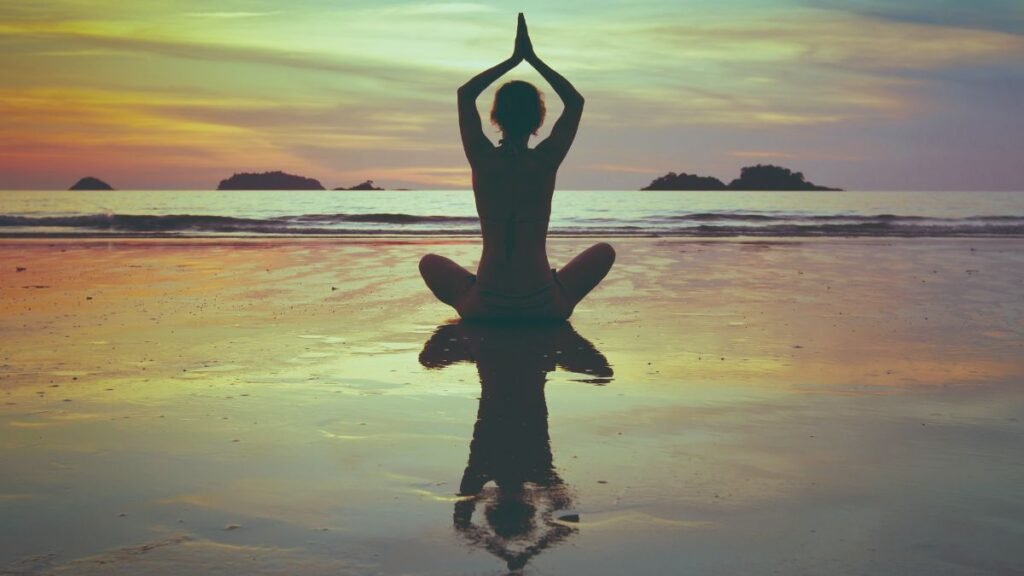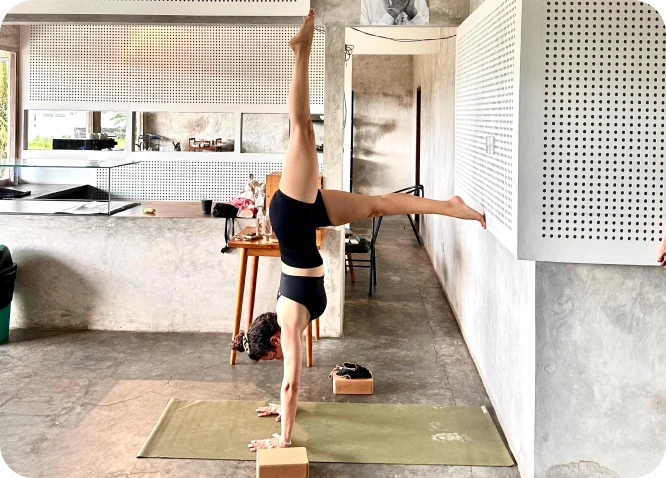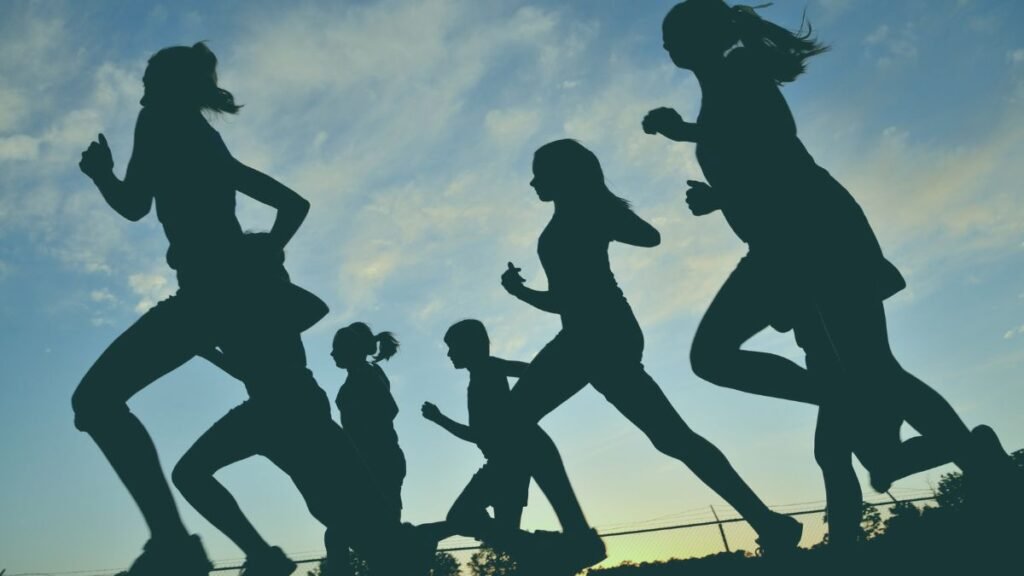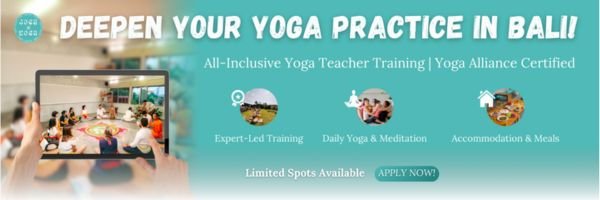Yoga directly addresses runner problems—tight muscles, weak stabilizers, and lack of mobility—delivering faster recovery, fewer injuries, and a better running experience.
Yoga and running are a power combo. Runners push their bodies hard, but that comes with stiff hips, sore hamstrings, and the constant risk of injury. Yoga fills these gaps by stretching tight areas, building supporting muscle strength, and improving mental focus for every run. More and more runners are turning to yoga for exactly these reasons—better recovery, stronger bodies, and sharper minds.
Regular yoga practice isn’t just for flexibility—according to Amanda Brooks, a running coach at Run To The Finish, it’s also a great tool for injury prevention, mental clarity, and improved running form. Many runners who combine the two see fewer aches and pains, and even better race results. If you want to run longer, stronger, and smarter, it’s time to get on the mat. Explore how yoga specifically benefits runners in our complete guide to yoga anatomy and discover effective yoga for stress relief to complement your training.
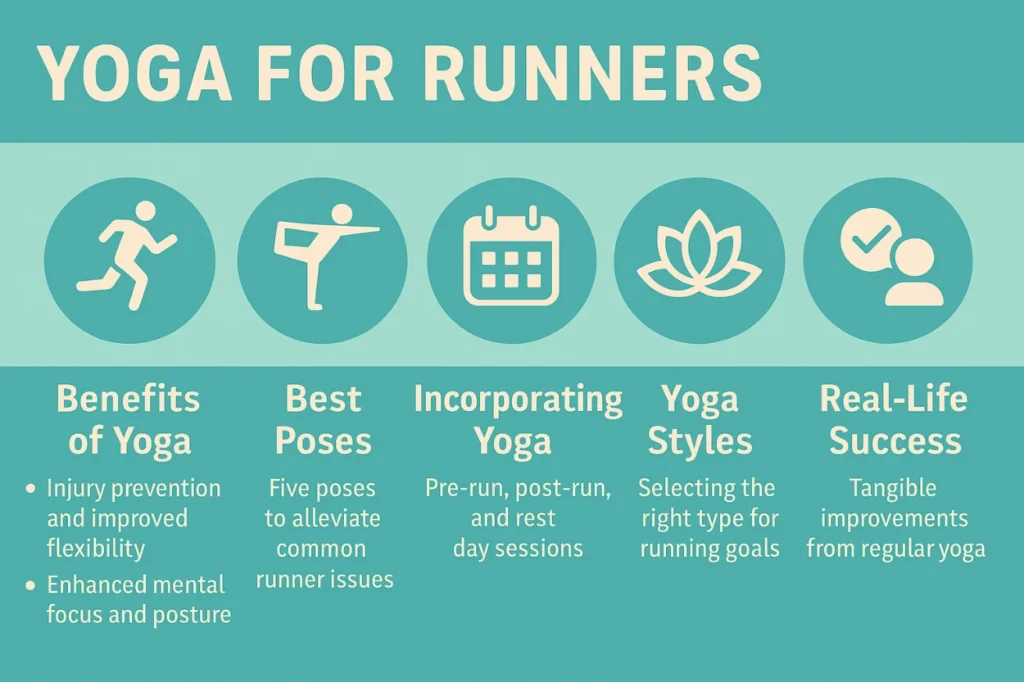
Why Should Runners Practice Yoga?
Yoga gives runners the missing tools—injury prevention, flexibility, and mental clarity—to push harder and recover smarter.
Runners know the drill: tight hamstrings, aching calves, and nagging injuries that never seem to disappear. Yoga fills the gaps in every runner’s routine by addressing muscle imbalances and strengthening the stabilizer muscles for runners. Check out these yoga therapy approaches if you want to dig deeper into injury recovery.
Injury Prevention:
Yoga strengthens your supporting muscles—hips, glutes, core—so your joints don’t take the brunt of every run. With more stability, your knees and ankles become more resilient, reducing your chances of sidelining injuries. If you’ve struggled with recurring issues, a consistent yoga routine can help keep you running pain-free.
Enhanced Flexibility:
Runners often complain about tight hamstrings and calves, which can lead to strains and poor running form. Yoga stretches these problem areas and restores mobility, making each stride smoother and reducing the risk of painful pulls. Explore stretching techniques and yoga for posture for more targeted support.
Mental Focus:
Endurance running is as much mental as it is physical. Yoga’s focus on breath control and mindfulness keeps you centered and calm—two keys for maintaining pace and pushing through fatigue. Practices like meditation in Canggu can give your concentration a major upgrade on race day.
Improved Posture:
Running with poor posture drains energy and invites injury. Yoga helps you build awareness of your spine and realign your form, which means more efficient movement and less strain on your body. Try poses that support spinal alignment and stability to keep your posture strong.
Runners who add yoga to their routine notice fewer injuries, more flexibility, and a mental edge. That’s not hype—that’s what actual coaches and athletes are experiencing right now.
Best Yoga Poses for Runners
The right yoga poses fix tight muscles, prevent injuries, and speed up recovery—so you can run farther and bounce back faster.
Every runner has problem zones: stiff calves, cranky hips, or sore backs after long miles. Targeting these areas with smart yoga poses can unlock real performance gains and minimize downtime. Here are the best poses for runners:
1. Downward-Facing Dog (Adho Mukha Svanasana)
This classic pose stretches calves, hamstrings, and the entire spine—perfect for runners with tight legs.
How-To: Start on hands and knees, tuck your toes, and lift your hips toward the ceiling. Press heels down and keep your spine long. Focus on even weight between hands and feet. Need more detail? Check out the Asana Yoga Guide for beginners and advanced for deeper alignment tips.
2. Pigeon Pose (Eka Pada Rajakapotasana)
Pigeon Pose opens up stubborn hips and relieves tension in the glutes—a lifesaver for runners logging lots of miles.
How-To: Bring one knee forward behind your wrist, extend the opposite leg back, and fold forward. Use props or keep your hips elevated if you’re tight. You’ll find modifications and safety cues in our yoga anatomy guide.
3. Low Lunge (Anjaneyasana)
This pose delivers a deep stretch for hip flexors and quadriceps, key muscles for a smooth stride.
How-To: Step one foot forward, bend the front knee at 90 degrees, and drop your back knee to the mat. Keep your chest lifted and your hips squared.
4. Reclining Hand-to-Big-Toe Pose (Supta Padangusthasana)
If you’re always battling tight hamstrings or calves, this pose is for you.
How-To: Lie on your back, loop a strap around your foot, and extend the leg upward while keeping your hips grounded. Flex the lifted foot for an even deeper stretch.
5. Legs-Up-The-Wall Pose (Viparita Karani)
This recovery pose boosts circulation and relieves post-run swelling.
How-To: Lie on your back and rest your legs up a wall, arms relaxed by your side. Stay for 5–10 minutes to help flush out fatigue.
Adding these poses after your run will loosen tight muscles, speed up your recovery, and help prevent overuse injuries. Want even more ways to tailor your yoga routine? See our guide to yoga for posture and back pain for additional tips.
How Can You Incorporate Yoga Into Your Running Routine?
Short, consistent yoga sessions deliver big benefits for runners—before, after, and between runs.
What Should You Do Before a Run?
Start with dynamic yoga stretches. Poses like Low Lunge and gentle twists help activate muscles and prepare your body for movement. This warm-up improves circulation and reduces your risk of strains.
Which Yoga Poses Are Best After a Run?
Post-run, focus on restorative poses. Legs-Up-The-Wall and Reclining Hand-to-Big-Toe are perfect for calming your system, boosting circulation, and speeding up muscle recovery. These stretches flush out fatigue and soreness.
What About Yoga on Rest Days?
Use rest days for longer, slow-paced yoga sessions. Hold static poses and work on flexibility and strength in problem areas. It’s your chance to address weaknesses that running alone never fixes.
What’s an Ideal Weekly Yoga-Running Schedule?
Here’s a sample plan to get you started:
- Monday: Easy run + short yoga flow
- Wednesday: Speed workout + restorative yoga
- Friday: Rest day yoga session (20–30 min)
- Sunday: Long run + gentle stretching
Get pose ideas from the Asana Yoga Guide for Beginners and Advanced.
How Do You Choose the Right Yoga Style for Runners?
The best yoga style for runners depends on your specific needs—strength, flexibility, or full recovery.
Should Runners Try Vinyasa Yoga?
Vinyasa Yoga offers flowing sequences that boost both strength and flexibility. It’s a solid choice if you want a session that feels active and keeps you moving.
Is Yin Yoga Good for Tight Muscles?
Yin Yoga works deep tissues with slow, long-held stretches. It’s ideal for runners who struggle with tight hips or hamstrings and want to improve their range of motion.
When Should You Use Restorative Yoga?
Restorative Yoga is best when you need to relax and let your body recover. It uses gentle, supportive poses that calm your system and help with deep healing.
Can Power Yoga Improve Endurance?
Power Yoga delivers an intense, strength-building session. If your goal is to build muscular endurance for racing, add Power Yoga once a week.
Explore even more styles and benefits in our types of yoga breakdown.
Mental Benefits: Enhancing Focus and Reducing Stress
Yoga’s mindfulness training sharpens mental resilience—vital for long-distance runners facing both physical and psychological barriers.
How Does Breath Control Improve Running Focus?
Practicing breath techniques like Ujjayi breathing helps runners keep a steady rhythm and stay calm under pressure. Controlled breathing reduces race-day anxiety, makes it easier to power through tough intervals, and supports a sustainable pace. Runners who use these breath practices find it easier to manage stress and keep their minds clear during long efforts. For more on yoga and the mind, see Transform Your Mind: Exploring the Mental Health Benefits of Yoga.
Can Meditation Boost Running Performance?
Short meditation sessions can improve focus and reduce nerves before a race. Just five minutes of mindful breathing or guided meditation clears out mental clutter, sharpens concentration, and sets you up for a smoother run. Meditation also helps runners bounce back from setbacks and build confidence before hard efforts.
Why Is the Mind-Body Connection Important?
Yoga teaches runners to listen to their bodies. Recognizing early signs of fatigue or strain means fewer injuries and better recovery. This body awareness is key for avoiding burnout and preventing overtraining, especially for competitive runners who tend to push their limits. Try combining yoga for overthinking with breathwork for maximum mental benefits.
Real-Life Success Stories
Plenty of runners have seen fewer injuries, faster recovery, and better results after making yoga part of their training.
How Did a Marathon Runner Reduce Injuries With Yoga?
One marathon runner cut down on injuries by adding two weekly yoga sessions focused on hip mobility and core strength. Over one season, nagging IT band pain disappeared, and she completed her next marathon pain-free.
Can Flexibility and Focus Really Improve Race Times?
Yes—runners who add yoga often report faster race times. By increasing flexibility and learning how to stay mentally present during races, one athlete shaved several minutes off his half marathon personal best.
What Do the Experts Say?
Running coaches and yoga instructors agree: yoga makes runners stronger, more resilient, and less likely to burn out. The verdict from running coaches and yoga instructors: yoga is more than just cross-training—it’s an essential tool for building strength, resilience, and long-term progress for endurance athletes.
FAQs
How often should runners practice yoga?
2–3 times a week is ideal, but even a single weekly session helps with recovery and mobility.
Can yoga replace strength training for runners?
Yoga builds strength, but it works best alongside traditional strength training for a complete program.
Is yoga useful for both sprinters and long-distance runners?
Absolutely. Yoga improves flexibility, speeds recovery, and sharpens focus for all running styles.
Want more real-world advice? Dive into our benefits of yoga teacher training to see how yoga experience translates into performance gains.
